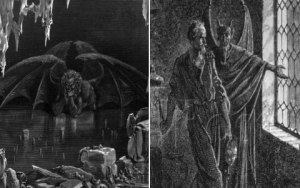The Essence of Tarot Card Combinations
Tarot card meanings are not static; they gain depth and specificity when read in conjunction with other cards. Understanding combinations involves observing how cards interact, influence, and build upon one another to form a cohesive narrative related to the querent's question. The meaning of a single card can be significantly nuanced by its neighbors.
Key Principles for Interpreting Combinations
- Individual Card Meanings: Begin with the core interpretation of each card in the combination. This forms the foundational understanding.
- Thematic Resonance: Identify overarching themes, symbols, or energies that connect the cards. Ask if they are harmonious, conflicting, or sequential. For example, multiple cards depicting water could emphasize emotions or intuition.
- Suit Dynamics: Consider how the elements represented by the suits (Wands - Fire/Action, Cups - Water/Emotions, Swords - Air/Intellect, Pentacles - Earth/Material) interact. Fire and Air can fuel each other, while Fire and Water might create conflict or steam (intense emotion).
- Numerical Significance: Look for numerical patterns, sequences (e.g., a Two followed by a Three), or the repetition of numbers. These can indicate progression, stages of development, or emphasis.
- Major Arcana Impact: Major Arcana cards often represent significant life lessons or archetypal energies. When present, they heavily influence any adjacent Minor Arcana cards, setting a dominant tone for the combination.
- Reversals in Context: A reversed card can indicate blocked energy, internal processes, delays, or an alternative expression of the card's upright meaning. Its effect on neighboring cards is crucial to understanding the overall message.
Common Interaction Patterns
- Amplification: Two or more cards with similar themes or energies intensify the message. For instance, The Sun and the Six of Wands together strongly indicate public success and recognition.
- Modification/Nuance: One card can refine, specify, or alter the meaning of another. The Lovers (choices, relationships) next to the Five of Pentacles (hardship, feeling left out) might suggest a difficult choice related to a relationship causing insecurity.
- Clarification: One card can provide context or explain the 'why' or 'how' behind another card. The Tower (sudden upheaval) followed by the Ace of Swords (new clarity) can show that a disruptive event leads to a breakthrough in understanding.
- Progression or Outcome: Cards read in sequence can depict a developing situation, showing cause and effect or a likely outcome from a preceding card's energy.
- Challenge or Obstacle: Contrasting cards, such as the industrious Three of Pentacles (teamwork, skill) alongside the Five of Swords (conflict, defeat), can highlight tension, differing agendas, or obstacles to collaborative efforts.
Practical Steps to Decipher Combinations
To effectively interpret tarot card combinations:
- Consider the Spread Positions: The designated meaning of each position in a spread (e.g., 'past', 'present', 'challenge', 'outcome') provides crucial context for the cards within it and how they interact to answer that part of the query.
- Synthesize, Don't Just List: Blend the meanings together to create a new, integrated message. Look for the "story" the cards are collectively telling rather than reciting individual definitions in isolation.
- Relate to the Question: Always interpret combinations within the specific context of the question asked. This anchors the interpretation and makes it relevant.
- Observe the Flow of Energy: Notice the direction or flow suggested by the imagery (e.g., figures facing towards or away from each other) and traditional meanings. This can hint at connection, separation, influence, or resistance between cards.
- Trust Intuition: Beyond established meanings and techniques, allow your intuition to guide you. The subtle interplay between cards can often evoke insights unique to the specific reading and querent.







